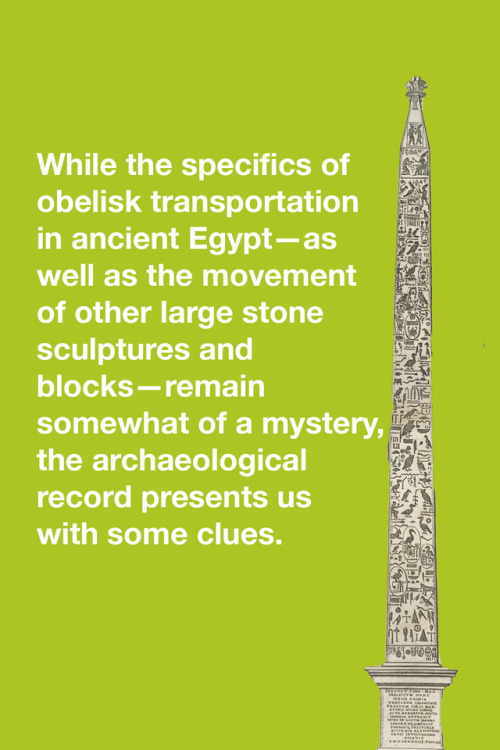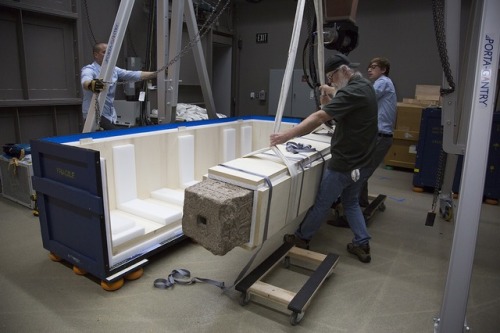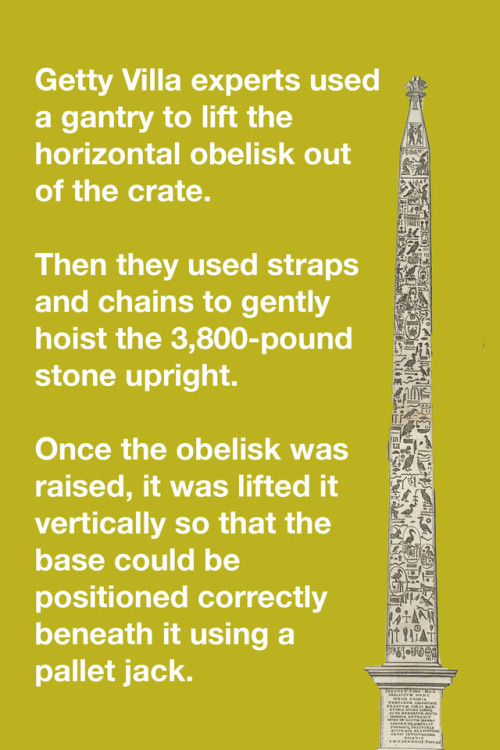#obelisks
Karnak Obelisk Built for Legendary Queen Hatshepsut Re-erected in Egypt
A Karnak obelisk, of which only the top third remained, that had lain on the ground in Luxor for many centuries was recently re-erected to its full size as part of Egypt’s promotion of this archaeological wonder park.

Allegheny Cemetery 42222-3
A Brief History of Moving Obelisks
One of the many questions about ancient obelisks is a logistical one: how did the Egyptians, and then the Romans, manage to transport and erect such massive monuments without the aid of modern technology?
While the specifics of obelisk transportation in ancient Egypt—as well as the movement of other large stone sculptures and blocks—remain somewhat of a mystery, the archaeological record presents us with some clues.
In Ancient Egypt, raising the obelisk upright and situating it in place probably involved the use of ramps and ropes, but we do not know the exact techniques employed.
In 1585, the “Vatican obelisk” was to be moved 275 feet to the square in front of Saint Peter’s Basilica. Architect Domenico Fontana designed a wooden tower that would be constructed around the obelisk, connected to a system of ropes and pulleys.
In 2017, the Museo del Sannio obelisk traveled from Italy to the Getty Villa in Los Angeles, California. Custom crates were built to safely pack the obelisk and base, which together weigh 5,400 pounds. The obelisk arrived in a horizontal position and needed to be erected on site.
Getty Villa experts used a gantry to lift the horizontal obelisk out of the crate. Then they used straps and chains to gently hoist the 3,800-pound stone upright. Once it was raised, it was lifted vertically so the base could be positioned correctly beneath it using a pallet jack.
Full post on the Getty Iris blog that takes look at the manpower and engineering needed to move obelisks in ancient Egypt, Rome, and today.
Image credits:
Pliny the Elder’s description of the ships that transported obelisks to Rome, From Athanasius Kircher, Obeliscus Pamphilius… (Rome: Grigniani, 1650). The Getty Research Institute, PJ1093 .K57
Plate related to the erection of St. Peter’s obelisk in the Piazza san Pietro in Rome, 1586, Natale Bonifacio. Etching and engraving, 49 x 121.2 cm. The Getty Research Institute, 2012.PR.35
Obelisk, Roman, AD 88/89. Granite, 351.5 cm high. Collection: Benevento, Museo del Sannio, inv. 1916
Post link
New #oilpainting in process, at the beginning. A tale of a man in a desert world populated by rough hewn, crude proto #obelisks, in the distance icy #lovecraftian mountain ranges ala #inthemountainsofmadness #kimseltzer♣️ #artcollectorsofig (at Portland, Oregon)
https://www.instagram.com/p/B8coVrhBjdQ/?igshid=1ewxeg80qj9z6
Post link











